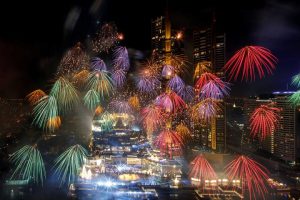Chinese People in new York City
The influx of transnational capital and rise of luxury developments in Flushing has displaced longtime immigrant residents and small business owners, as well as disrupted its cultural and culinary landscape. These changes follow the familiar script of gentrification, but with a change of actors: it is Chinese American developers and wealthy Chinese immigrants who are gentrifying this working-class neighborhood, which is majority Chinese. U.S. Department of Homeland Security. U.S. Department of Homeland Security.
The Flushing Chinatown, in the Flushing area of the borough of Queens in New York City, is one of the largest and fastest growing ethnic Chinese enclaves outside Asia, as well as within New York City itself. In the 1970s, a Chinese community established a foothold in the neighborhood of Flushing, whose demographic constituency had been predominantly non-Hispanic white. Main Street and the area to its west, particularly along Roosevelt Avenue, have become the primary nexus of Flushing Chinatown. However, Flushing Chinatown continues to expand southeastward along Kissena Boulevard and northward beyond Northern Boulevard.
Later on, during the 1970s-80s, Mandarin and Fuzhou-speaking immigrants began to arrive into New York City. Taiwanese were settling into Flushing, Queens when it was still predominantly European American, while Fuzhou immigrants were settling in Manhattan’s then very Cantonese-dominated Chinatown. Since the mid 1990s, an influx of immigrants from various parts of Mainland China began arriving later on eventually, with the increased influence of Mandarin in the Chinese-speaking world, and a desire of Chinese parents to have their children learn this language, Mandarin has been in the process of becoming the dominant lingua franca among the Chinese population of New York City. The Taiwanese and Fuzhou people were the earliest significant numbers of Chinese immigrants to arrive into New York who spoke Mandarin but not Cantonese, although many spoke their regional Chinese dialects as well.
Chinese community of East Harlem in Upper Manhattan. There is also a service from Flushing to Sunset Park that does not pass through Manhattan. New York City Subway, as well as by four stations of the Long Island Rail Road (LIRR)’s Port Washington Branch. The dollar vans (which are distinct from, and not to be confused with, Chinatown bus lines), go from Manhattan’s Chinatown to places in Sunset Park, Brooklyn; Elmhurst, Queens; and Flushing, Condo for sale Singapore – please click the following internet page – Queens. A system of dollar vans operates between the different Chinatowns in New York City. There are also intercity bus services that operate from the Chinatowns in New York City.
Main Street, Kissena Boulevard, and 41st Avenue in the Flushing Chinatown (法拉盛華埠), in Queens. Massage parlors in the Flushing Chinatown have become the hub of organized prostitution in the United States. Housing more than 30,000 individuals born in China alone, the largest by this metric outside Asia, Flushing is home to one of the largest and fastest-growing Chinatowns in the world. The segment of Main Street between Kissena Boulevard and Roosevelt Avenue, punctuated by the Long Island Rail Road trestle overpass, represents the cultural heart of Flushing Chinatown.


